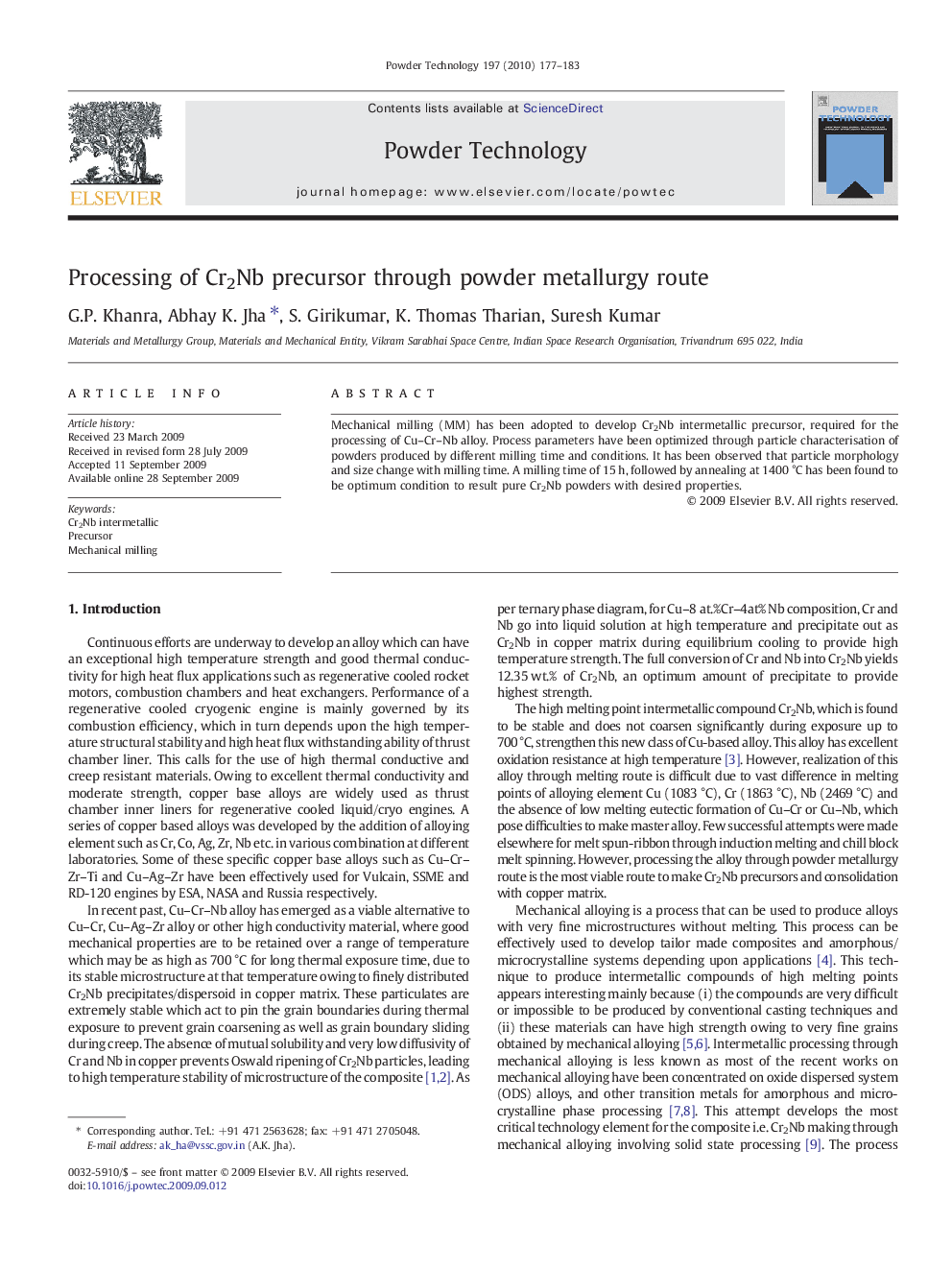| Article ID | Journal | Published Year | Pages | File Type |
|---|---|---|---|---|
| 238460 | Powder Technology | 2010 | 7 Pages |
Mechanical milling (MM) has been adopted to develop Cr2Nb intermetallic precursor, required for the processing of Cu–Cr–Nb alloy. Process parameters have been optimized through particle characterisation of powders produced by different milling time and conditions. It has been observed that particle morphology and size change with milling time. A milling time of 15 h, followed by annealing at 1400 °C has been found to be optimum condition to result pure Cr2Nb powders with desired properties.
Graphical abstractCu–Cr–Nb alloy has emerged as a viable alternative to existing copper alloys used as thrust chamber inner liners for regenerative cooled engines of satellite launch vehicles. Vast difference in melting points of alloying elements and absence of low melting eutectics, pose difficulties to realize the alloy through melting route.The stoichiometric compositions of the elemental powders of Chromium and Niobium, when milled for 15 h, followed by annealing at 1400 °C resulted in optimum condition to form Cr2Nb powders.Figure optionsDownload full-size imageDownload as PowerPoint slide
